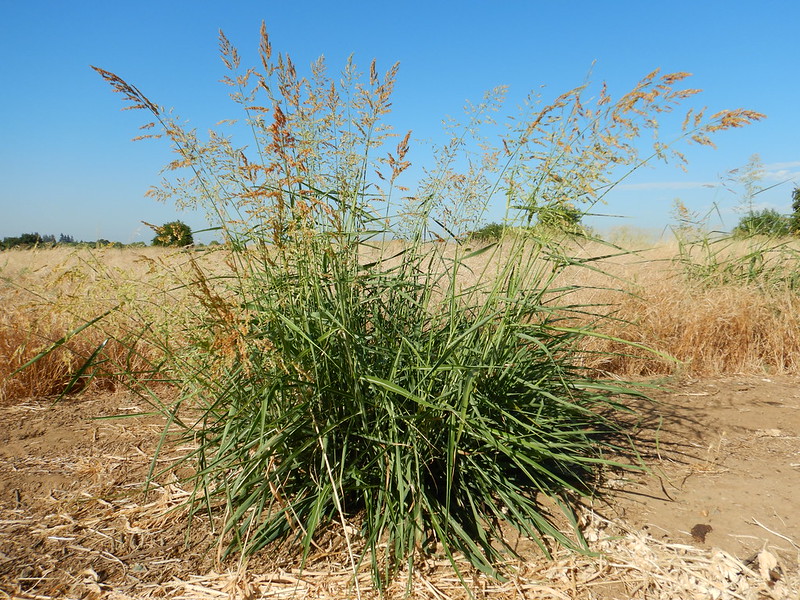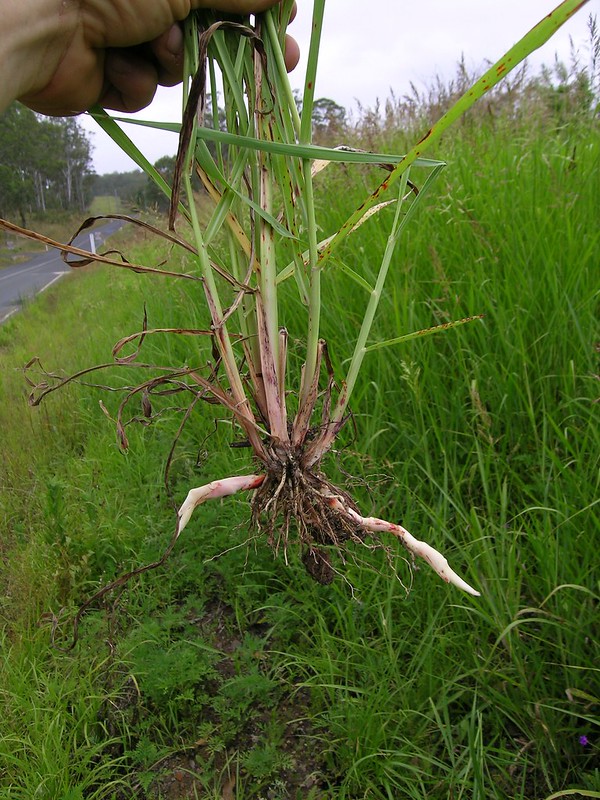Mister Johnson's Curse
Mister Johnson's Curse:
The Special Problem of an Especially Noxious Weed

If you're new to the world of native plants, and nobody in recent generations of your family has been a farmer, you might not know about Johnson Grass. In fact, you might even drive by fields of it on your way to work every day and think to yourself, "That's a nice little patch of prairie." Because it grows tall and blows in the wind just like the movie images of prairie, it's easy for the average layperson to be deceived from a distance. But ask any knowledgeable farmer about the difference, and they will set you straight.
This tall and graceful-looking grass was first brought over from the Mediterranean as a gift to a plantation owner in Mississippi just 150 years ago. He liked it, and established it on his land where it grew thick and fast. From there, it has spread all over the southeastern quadrant of the United States and can be found in spots as far west as Texas and even California. It thrives on any patch of disturbed soil it can find, whether plowed or bulldozed or just overgrazed and overworked. A single plant produces up to 5,000 seeds per year, and those seeds can lie dormant in the ground for up to twenty years to come.
Johnson Grass particularly loves fields plowed up for agriculture, of course, and it has literally destroyed millions of acres and bankrupted thousands of family farmers in its march across the land. Suffolk County in West Virginia has made it against the law to have even a single Johnson Grass plant on your land because it is so destructive to farmland. But unbelievably, some seed dealers still sell Johnson Grass seeds!
No doubt that plantation owner in Mississippi had no idea what he was about to unleash on the continent when he accepted the gift of Mediterranean grass from his friend. He just wanted to establish a nice hay field to feed his cattle and horses, and this plant seemed to fit the bill. But he and others were soon to find out that during times of drought and under stress, Johnson Grass produces an acid that is poisonous to those same cattle and horses. And we can imagine that the first time that happened, they might have decided to mow the stuff down and plow it under to get rid of it. But they were in for a big surprise.

Mister Johnson's Curse spreads rapidly and aggressively by rhizomes as well as by its prodigious capacity to produce seeds. Unlike prairie grasses, its roots are shallow, so it does nothing to aerate the soil or to draw water deep into the ground. It also exudes a natural toxin from its root system that prevents other plants from growing close to it, so effectively serves as a "herbicide" to the competition.
We've heard that persistent severe grazing will eventually kill it off, but that can take years. Removing it by hand is an arduous process, because every part of the tough and extensive rhizomes must be located and pulled out of the soil or it will just spring back again.
So what should you do if you have Johnson Grass on your land? Solarization removal methods can be effective (see our Native Grass Planting Tips page) if it exists in smaller colonies and hasn't spread too far. For larger areas, we have used repeated plowing over the winter months to expose the roots to freezing temperatures and dry them out during sunny and dry spells. On native prairie restoration projects, we have made an exception to our general rule of avoiding chemicals, and carefully applied herbicide directly to the plants.
If nothing else, Johnson Grass should always be mowed to prevent it from blooming and going to seed, while you work persistently and patiently to remove it from your land.
